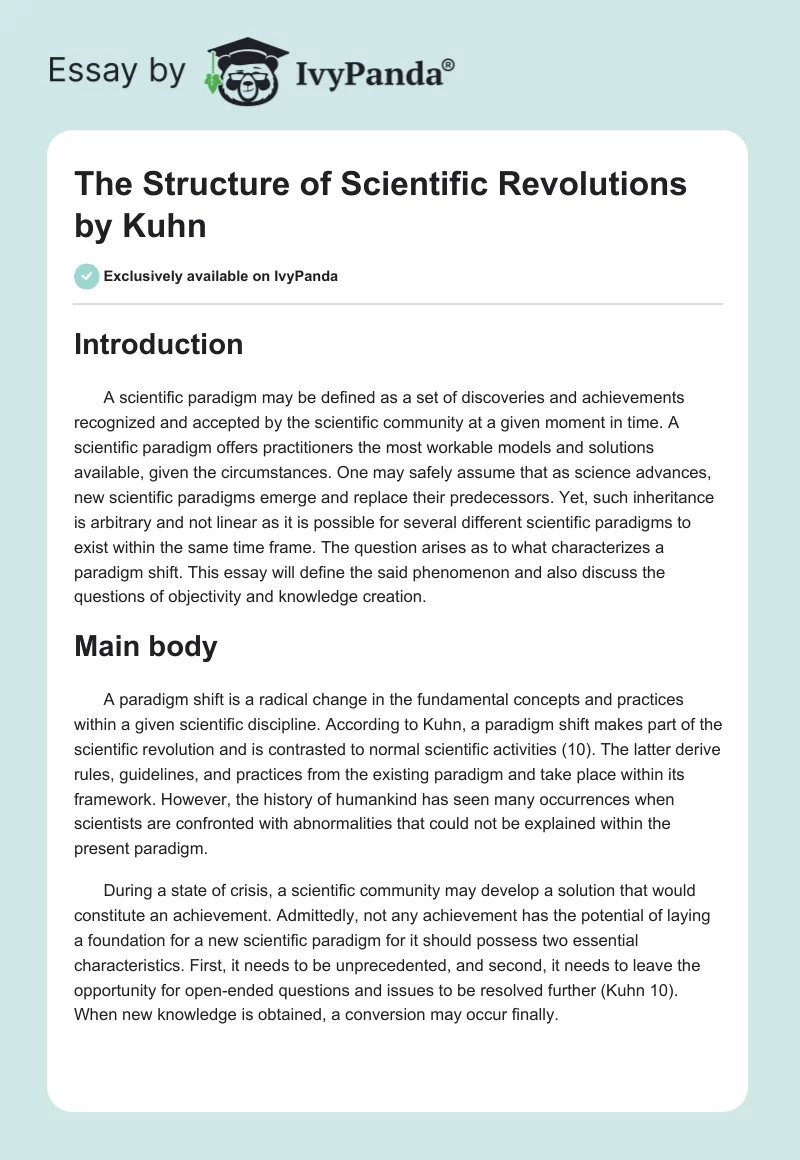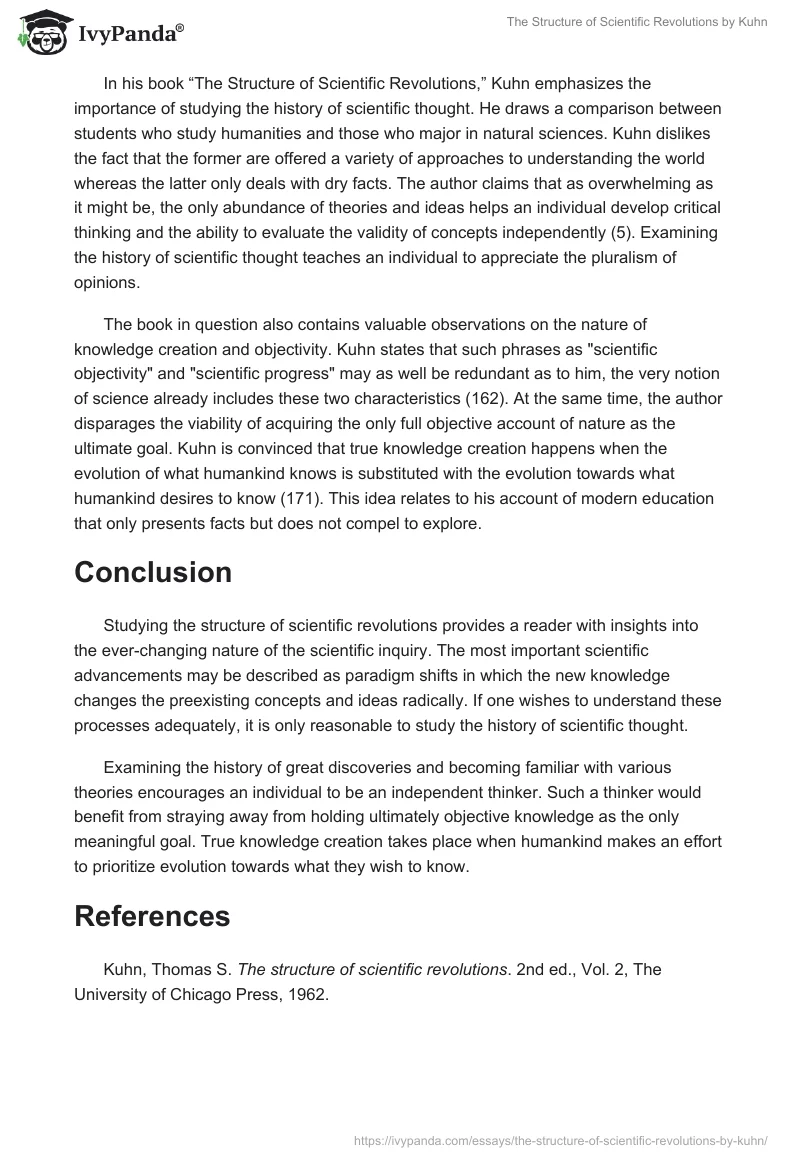Introduction
A scientific paradigm may be defined as a set of discoveries and achievements recognized and accepted by the scientific community at a given moment in time. A scientific paradigm offers practitioners the most workable models and solutions available, given the circumstances. One may safely assume that as science advances, new scientific paradigms emerge and replace their predecessors. Yet, such inheritance is arbitrary and not linear as it is possible for several different scientific paradigms to exist within the same time frame. The question arises as to what characterizes a paradigm shift. This essay will define the said phenomenon and also discuss the questions of objectivity and knowledge creation.
Main body
A paradigm shift is a radical change in the fundamental concepts and practices within a given scientific discipline. According to Kuhn, a paradigm shift makes part of the scientific revolution and is contrasted to normal scientific activities (10). The latter derive rules, guidelines, and practices from the existing paradigm and take place within its framework. However, the history of humankind has seen many occurrences when scientists are confronted with abnormalities that could not be explained within the present paradigm.
During a state of crisis, a scientific community may develop a solution that would constitute an achievement. Admittedly, not any achievement has the potential of laying a foundation for a new scientific paradigm for it should possess two essential characteristics. First, it needs to be unprecedented, and second, it needs to leave the opportunity for open-ended questions and issues to be resolved further (Kuhn 10). When new knowledge is obtained, a conversion may occur finally.
In his book “The Structure of Scientific Revolutions,” Kuhn emphasizes the importance of studying the history of scientific thought. He draws a comparison between students who study humanities and those who major in natural sciences. Kuhn dislikes the fact that the former are offered a variety of approaches to understanding the world whereas the latter only deals with dry facts. The author claims that as overwhelming as it might be, the only abundance of theories and ideas helps an individual develop critical thinking and the ability to evaluate the validity of concepts independently (5). Examining the history of scientific thought teaches an individual to appreciate the pluralism of opinions.
The book in question also contains valuable observations on the nature of knowledge creation and objectivity. Kuhn states that such phrases as “scientific objectivity” and “scientific progress” may as well be redundant as to him, the very notion of science already includes these two characteristics (162). At the same time, the author disparages the viability of acquiring the only full objective account of nature as the ultimate goal. Kuhn is convinced that true knowledge creation happens when the evolution of what humankind knows is substituted with the evolution towards what humankind desires to know (171). This idea relates to his account of modern education that only presents facts but does not compel to explore.
Conclusion
Studying the structure of scientific revolutions provides a reader with insights into the ever-changing nature of the scientific inquiry. The most important scientific advancements may be described as paradigm shifts in which the new knowledge changes the preexisting concepts and ideas radically. If one wishes to understand these processes adequately, it is only reasonable to study the history of scientific thought.
Examining the history of great discoveries and becoming familiar with various theories encourages an individual to be an independent thinker. Such a thinker would benefit from straying away from holding ultimately objective knowledge as the only meaningful goal. True knowledge creation takes place when humankind makes an effort to prioritize evolution towards what they wish to know.
References
Kuhn, Thomas S. The structure of scientific revolutions. 2nd ed., Vol. 2, The University of Chicago Press, 1962.


